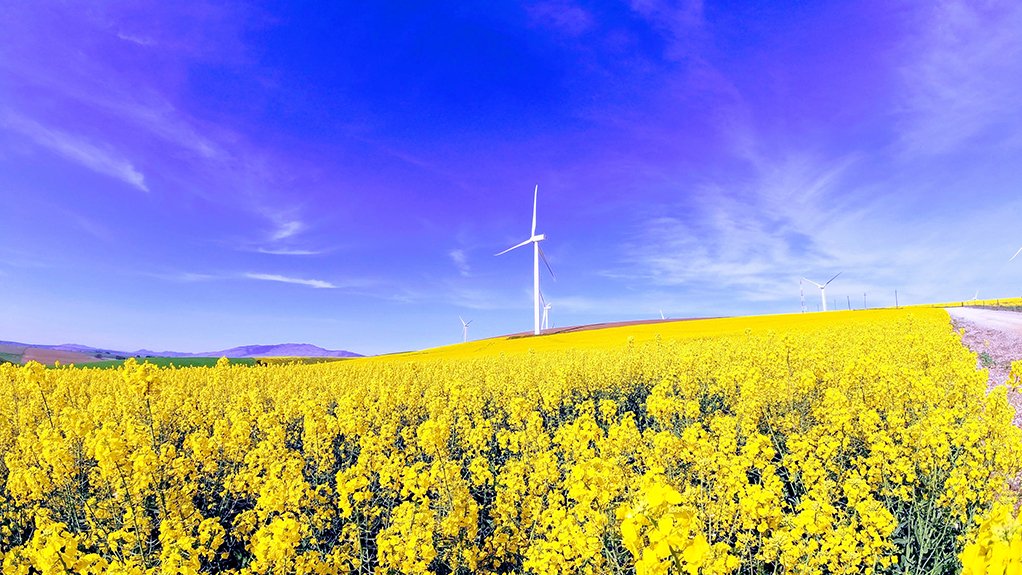The Department of Mineral Resources and Energy (DMRE) has released the much-anticipated and delayed seventh bid window (BW7) of the Renewable Energy Independent Power Producer Procurement Programme (REIPPPP), through which it will be seeking bids for the development of 3 200 MW of wind and 1 800 MW of solar photovoltaic (PV).
In a notice published on the Independent Power Producer Projects website, which was temporarily removed while a formal statement was finalised, it was indicated that BW7 was the first bidding round launched in line with the Ministerial Determination published by Mineral Resources and Energy Minister Gwede Mantashe in December 2022.
The determination outlined an intention to procure 14 771 MW of new generation and storage capacity, including 3 940 MW of solar PV, 9 600 MW of wind and 1 231 MW of battery energy storage.
The BW7 request for proposals (RFP) for 5 000 MW follows the partial failure of BW6, during which only preferred bidders for a 1 000 MW solar PV allocation were selected, after Eskom indicated that the grid connection capacity that formed the basis for 23 wind bids vying for a 3 200 MW allocation had been absorbed by independent power producers pursuing private power purchase agreements (PPAs).
The development led to Eskom adopting new interim rules for the issuance of grid connection cost estimate letters (CELs) and budget quotes from the ‘first come, first served’ model that had been used previously to a so-called ‘first ready, first served’ approach, and to flag that it intended moving to a gated process in future.
In late October, Eskom also released an updated Generation Connection Capacity Assessment (GCCA) and signalled that it would add an amendment outlining its curtailment framework, which could unlock grid capacity in the areas currently identified in the GCCA as having zero grid-connection capacity.
In the website notice confirming the launch of BW7, the DMRE said bidders should note the available areas of supply in the GCCA, which was available on the Eskom website, but made no reference to the curtailment framework.
“To ensure that bidders receive their CELs in time for bid submission, the cut-off date for bidders to apply for a CEL is 90 days prior to the bid submission date.
“This is to ensure Eskom has sufficient time to process all CEL applications received (up to 90 days).”
A bid submission date of April 30, 2024, has been set, along with a January 31 deadline for the application for CELs.
The DMRE also said that, given South Africa’s prevailing “energy challenges”, which had resulted in 2023 being the worst for loadshedding the country has faced, the qualification criteria had been developed to promote the submission of “fully developed” projects that were able to be constructed and connected no later than 24 months after achieving commercial close.
“In addition to the provision of energy output, this REIPPPP covers the provision of and payment for ancillary services, which support the reliable and secure operation of the transmission system by the buyer, acting through its system operator,” the notice adds.
A Bidders’ Conference has been scheduled for January 17 to “provide more information on the functionality, evaluation requirement criteria, and bid submission expectations”.
As is the norm with REIPPPP bids, prospective bidders are required to pay a non-refundable fee of R25 000 to have access to the RFP and to submit one project at the bid submission date. “If the prospective bidder intends to submit more than one project, they will need to make an additional payment of R25 000 net of all charges per additional project.”
The DMRE also indicated that the evaluation of the bids was expected to endure for three months following the submission of bids on April 30, with a financial close “long stop date of one month post”.
However, the REIPPPP has been prone to delays following its resumption in 2021 and after having been disrupted for seven years owing to a refusal by Eskom leadership, from 2015, to enter into new PPAs on the basis of a claim that the utility had sufficient generation capacity.
Several BW5 projects, which were bid ahead of the supply-chain disruptions associated with Covid lockdowns in China and the spike in prices that followed Russia’s invasion of Ukraine, had failed to reach financial close and had until the end of December to do so.
It has also been confirmed that even some BW6 projects are facing difficulties in closing.
EMAIL THIS ARTICLE SAVE THIS ARTICLE ARTICLE ENQUIRY
To subscribe email subscriptions@creamermedia.co.za or click here
To advertise email advertising@creamermedia.co.za or click here











